On the wall is a photo showing Nadya Tolokonnikova, one of the creators of the Russian feminist protest art collective Pussy Riot, in a blue prison uniform, sitting at a small desk, with a bare wooden plank to her right. The wall is that of a small room, an almost exact reproduction of the prison cell in Siberia where the artist spent two years in solitary confinement. The room is at the end of a corridor lit in bright red, with red paint splattered on the floor to look like blood. This is the final scene visitors encounter in Tolokonnikova’s exhibit at Container in Santa Fe, Putin’s ashes (until July 20).
The exhibition spans two floors, includes many works produced over the past few months, and takes visitors on a journey through the trauma and violence Tolokonnikova suffered as a result of her activism against Russian President Vladimir Putin’s regime. . The artist guides me, using her phone’s camera, through what she calls a “total installation,” a reference to the late Ukrainian-American artist’s point of view. Ilya Kabakov that conceptual artists should be responsible for the context of their exhibitions, including the spaces between works.
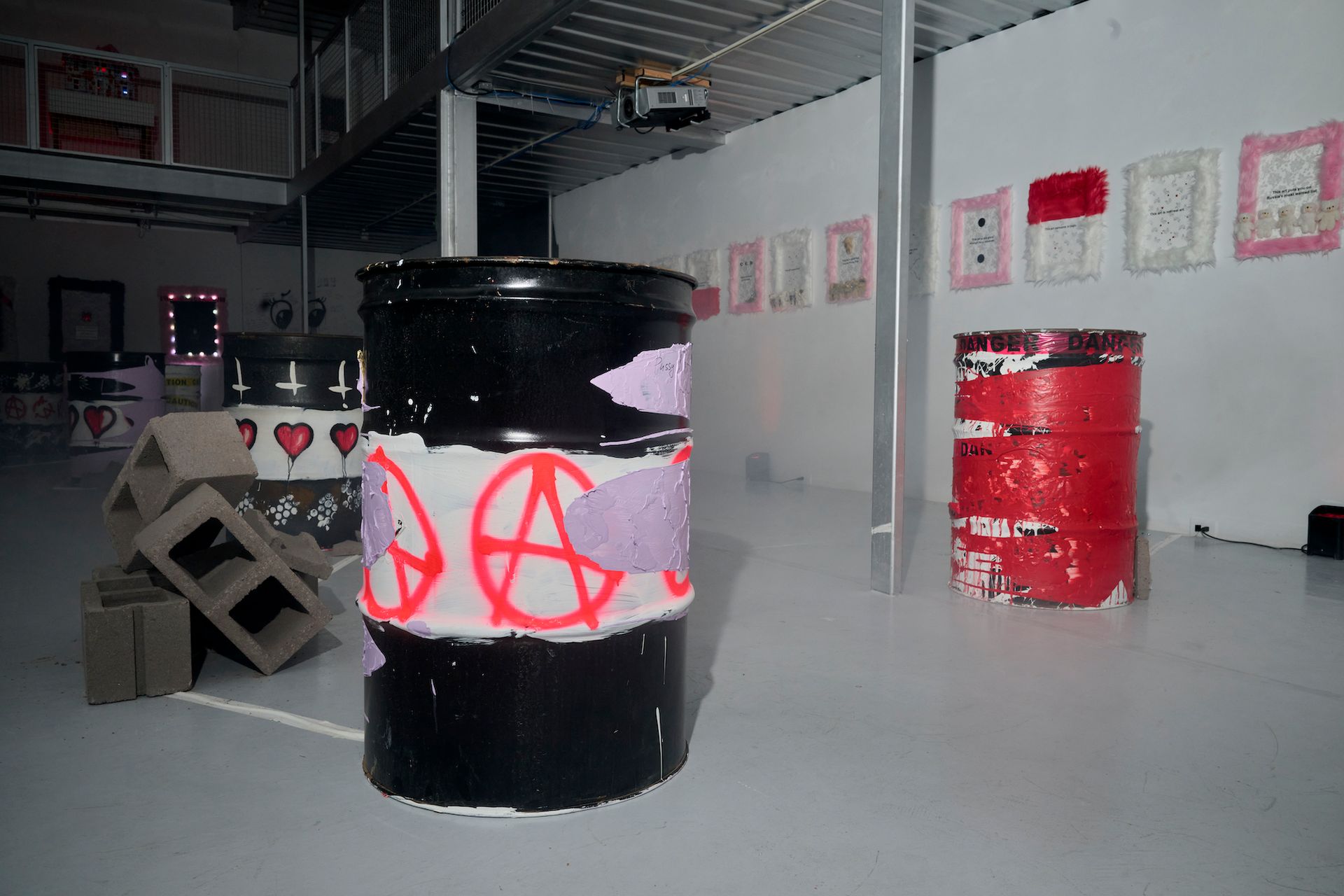
Installation view of Pussy Riot/Nadya Tolokonnikova: Putin’s Ashes in Container, Santa Fe, New Mexico Photo by Molly O’Brien
Pussy Riot formed in 2011, with a strong punk aesthetic framing the band’s staged performances. Initially an all-female, female-identifying collective, Pussy Riot has grown into a global movement with hundreds of members from all genders. This exhibit bears the same title as a Pussy Riot performance staged earlier this year, in which a group of women in balaclavas burned an effigy of the Russian president. The ashes recovered from this performance were collected in small glass vials of various sizes which are now part of the installation. Along with them are buttons on the wall which, if pushed, promise to burn Putin to ashes and eliminate sexism.
The space is part white cube, part street protest, with paint-splattered barrels placed throughout and graffiti on the walls. Near the entrance are fluff-framed signs with phrases such as “this art is too political” or “this art is created by a criminal.” Some of them are splattered with red paint to evoke blood, some have sewing machine parts attached to them.
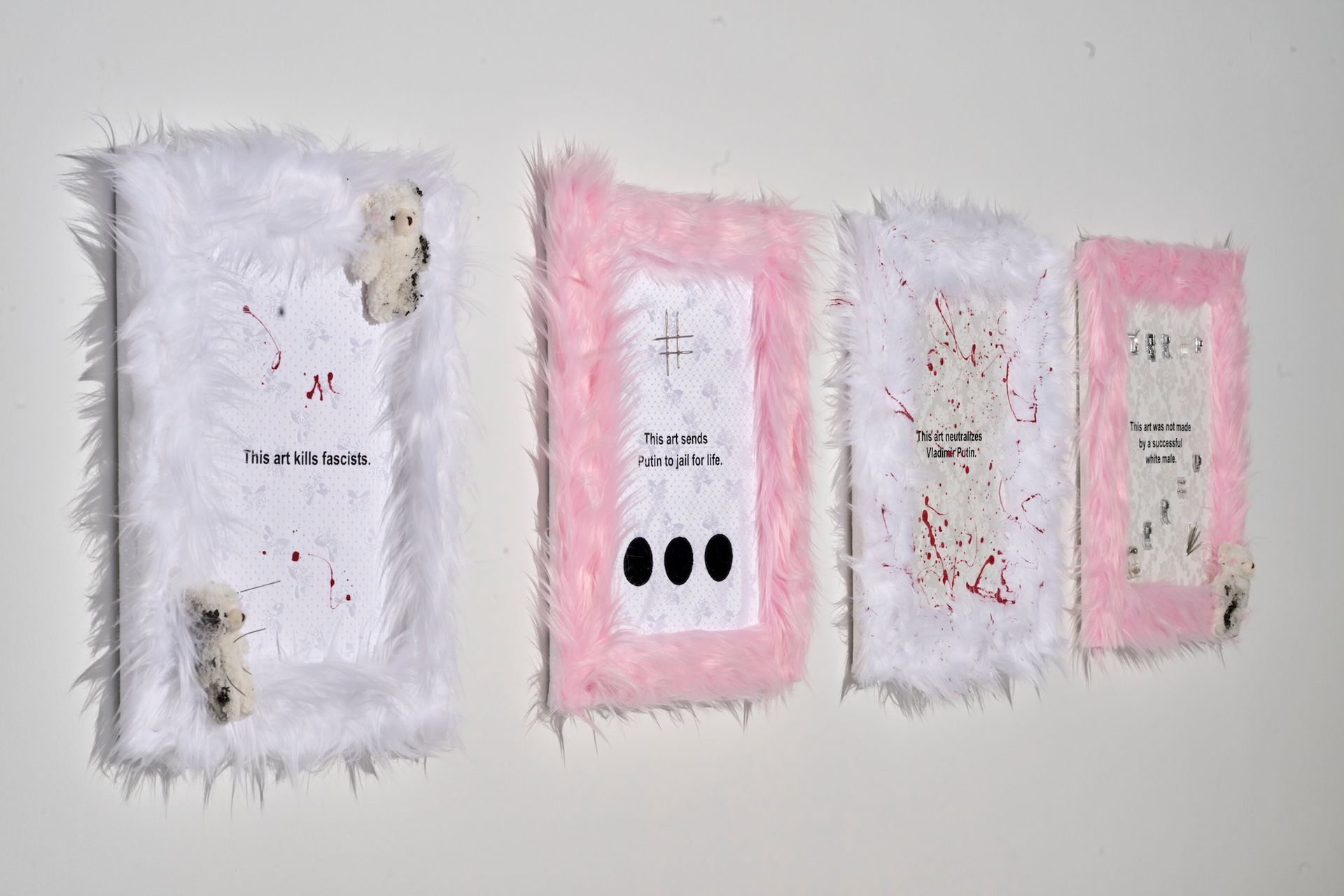
Installation view of Pussy Riot/Nadya Tolokonnikova: Putin’s Ashes in Container, Santa Fe, New Mexico Photo by Molly O’Brien
During her nearly two-year detention in Russian penal colonies, Tolokonnikova had to sew military uniforms using old machines whose often broken components injured her fingers. “At night, I dreamed of having new sets of needles and parts of sewing machines,” she says. “In reality, you never had enough and you had to injure yourself while sewing. So it’s my blood. Incarcerated women generally had to work between eight and 16 hours a day. “They made me work less than the other prisoners because I had lawyers and all that, but I still had to fill the same quota, so I had to be very focused.”
In a hallway of Container, a series of screens show what the artist calls Pussy Riot’s “Legacy Videos,” recordings of the performances that brought the group to worldwide attention. They include footage from a recent performance outside the prison where opposition leader Alexei Navalny is being held, and punk prayer, the 2012 performance in Moscow’s Christ the Savior Cathedral that earned Tolokonnikova and two other activists from the group prison sentences. The wall along the stairway to the gallery’s second floor might look like something out of a nightclub, but the pink squares decorating it frame knives like those made in prison from makeshift materials, like improvised self-protection weapons. These were forged from metal salvaged from an abandoned prison and are fashioned in a distinctive Pussy Riot style into symbols of female power.
In parallel with the centerpiece of the show, an autumn screening of the short film documenting the Putin’s ashes performance, there are posters with the lyrics of Pussy Riot’s first song, kill the sexist, and text of the sentence of the court of Tolokonnikova. Above the texts are drawings of a Virgin Mary in the shape of a vagina, which the artist claims caused her to be added to Russia. list of wanted criminals. In the center of the room is a sculpture representing a doll’s house, HAUNTED! (2023), whose facade and interiors are covered in orange pills and pill bottles crawling on every surface like invasive species. The pill bottles are for duloxetine, Tolokonnikova says, “the medicine I’ve had to take since I got out of prison because I was diagnosed with PTSD and depression. I hate those pills and try to take them. stop. But they keep coming back into my life. And it’s always a fight.” The work is accompanied by a poetic soundscape created by Bono of U2. A passage states: “I turned my rage into beauty and my raging beauty.”
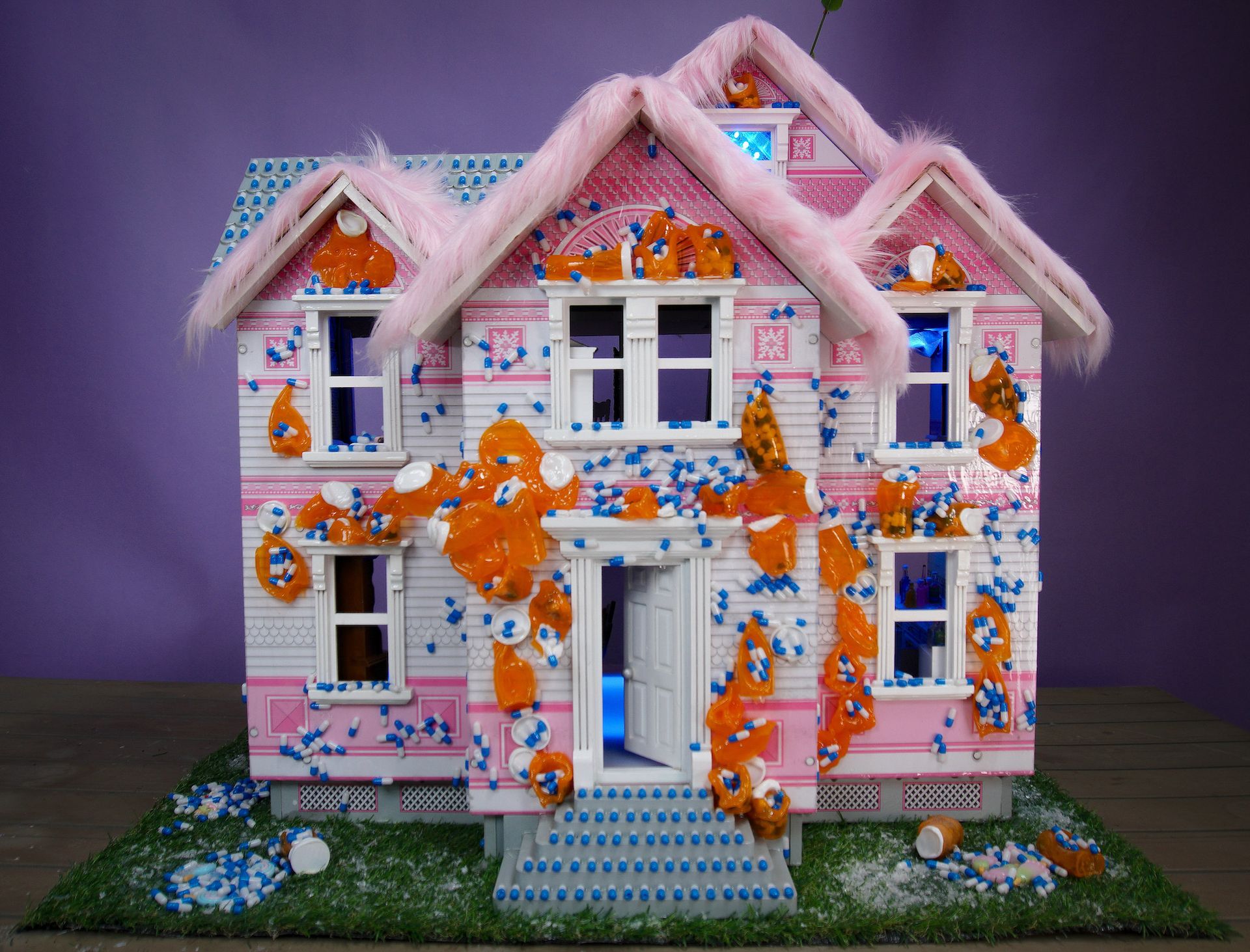
Nadya Tolokonnikova, HAUNTED!2023 Photo courtesy of the artist
Although Pussy Riot’s art is directly related to Russian politics, some of the topics covered by Container’s show are also relevant to other countries. “Since Pussy Riot’s inception, we’ve always wanted to be universal and global,” says Tolokonnikova. “I like to call it anti-globalization because I believe that we need coordination at the global level to achieve our goals as humanity. Otherwise, global poverty, mental health, financial inequality and wars will not won’t be resolved. We’re not doing a good job on that. I think collectives like Pussy Riot, or Zapatistas in Chiapas, Mexico, or Extinction Rebellion, with their global support base, are important in countering bad players, such as transnational corporations or authoritarian governments.
Since the imprisonment of three of their members, one of Pussy Riot’s focus areas has become incarceration and prison reform. During a previous visit to the United States, Tolokonnikova and other members of the group made it clear that this was a priority. “We met then-Mayor of New York, Bill de Blasio, and he asked us, ‘How can I help you?’ “, she says. “We said, ‘We want to go to jail.’ He was like, ‘You just got out of jail,’ and we were like, ‘No, we want to go to Rikers.’ We wanted to see the conditions there.
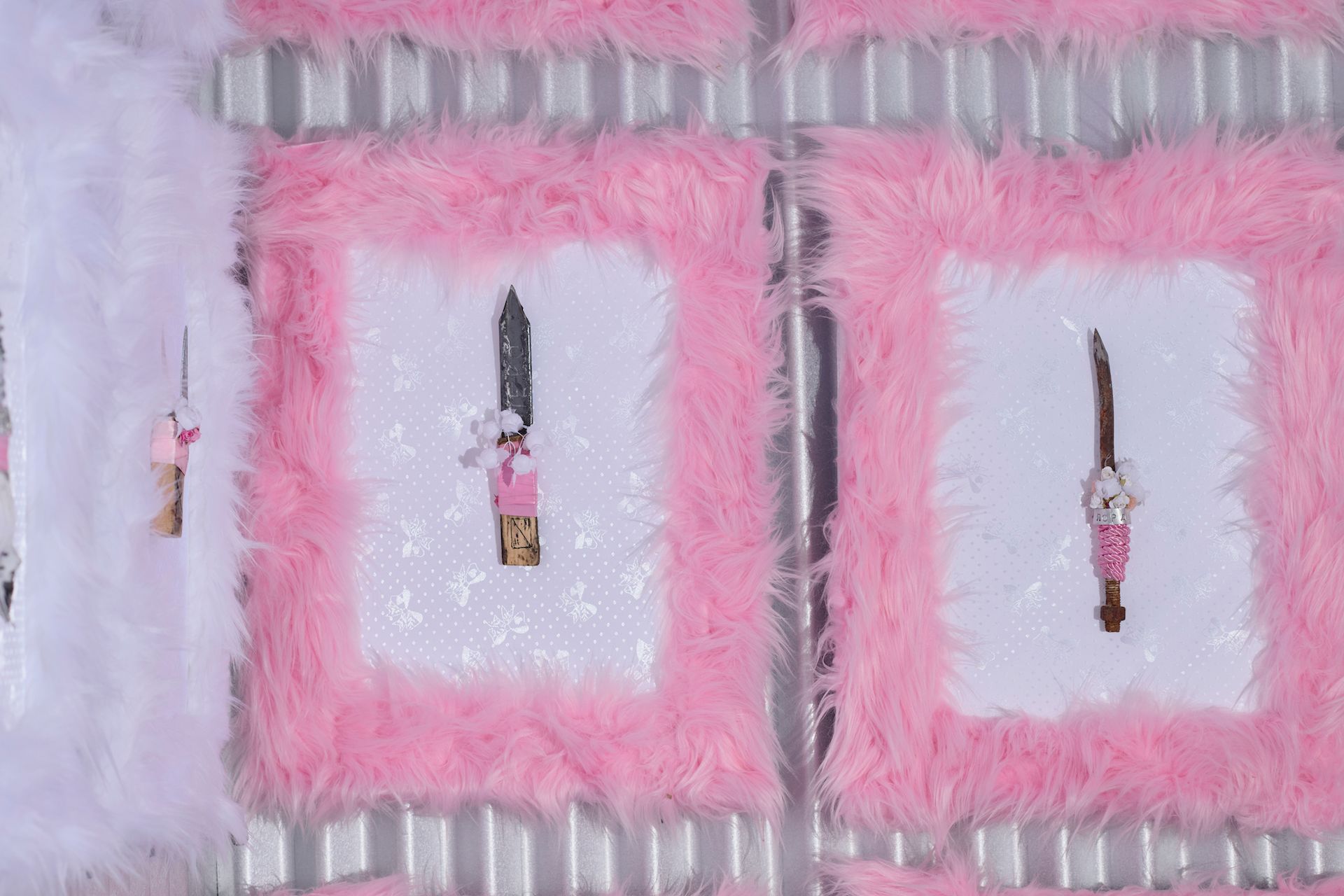
Installation view of Pussy Riot/Nadya Tolokonnikova: Putin’s Ashes in Container, Santa Fe, New Mexico Photo by Molly O’Brien
The mayor’s office arranged a tour of the infamous Rikers Island prison complex, which activists have been calling on the city to close for years. Members of Pussy Riot toured the facility and spoke to those incarcerated, but took the experience with a grain of salt. “Officially organized tours aren’t real, so we’ve spoken with people who have been through Rikers and connected with groups working on rehabilitation through art,” Tolokonnikova says. “My interest continues. I’ve been to correctional facilities in downtown LA, got to sample the food, which was absolutely awful. I could see how they treated the mentally ill: they chained them to the table. There are so many things to sort out. And the fact that the prison population per capita in the United States is the largest in the world while the country claims to be the land of the free is just sad.
A corridor marked with red lights leads to the prison cell, where the exhibition ends. Tolokonnikova was there on opening day, welcoming visitors to Container and her replica cell. She says she won’t hire a bodyguard – as her friend, artist Judy Chicago, keeps recommending – because, according to her, if her government really wants to poison her with a grade nerve agent military, having a guard won’t make much difference.
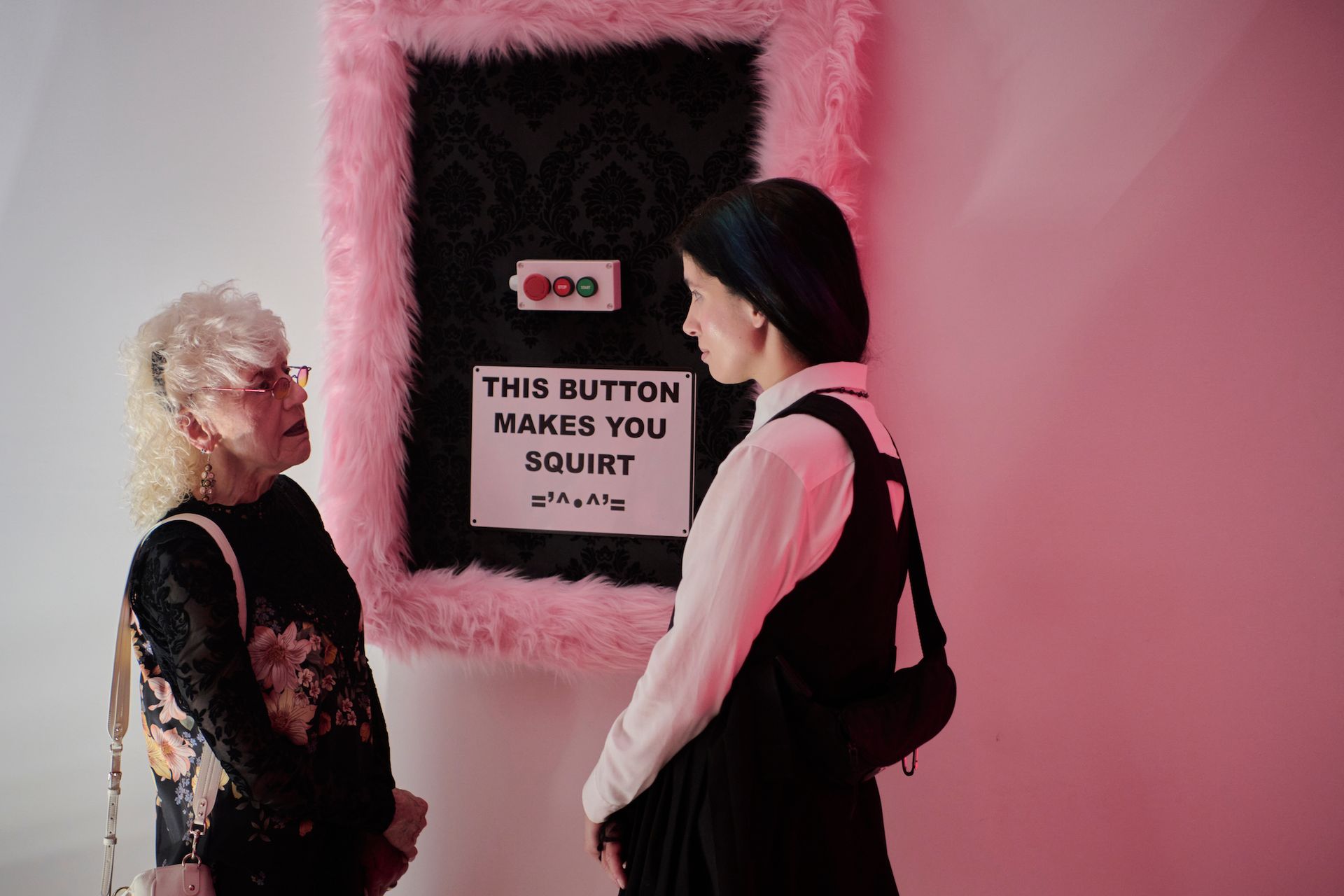
Judy Chicago (left) and Nadya Tolokonnikova (right) at the opening of Putin’s ashes in Container, Santa Fe, New Mexico Photo by Molly O’Brien
“When I came out of prison in early 2014, I couldn’t recognize my country,” she says. “It was much darker, the censorship was stronger and people were more scared. And then [Russia’s annexation of] Crimea arrived and it really was the beginning of the end.
Since the beginning of Russia’s large-scale invasion of Ukraine in February 2022, the artist has felt a growing need to act. She collaborates with Ukrainians who, according to her, are less afraid than Russians and who have inspired her since the start of the country’s first Orange Revolution in 2004. And while she concedes that there are Ukrainians for whom “the only good Russian is a dead Russian,” she says, there are also many who are willing to collaborate with her. For the exhibition at Container, Tolokonnikova relied on the help of Ukrainian producer Val Zabaluyev, and she says that about 40% of the women who participated in the Putin’s ashes performances came from Ukraine; some of them had recently fled the country because of the war.
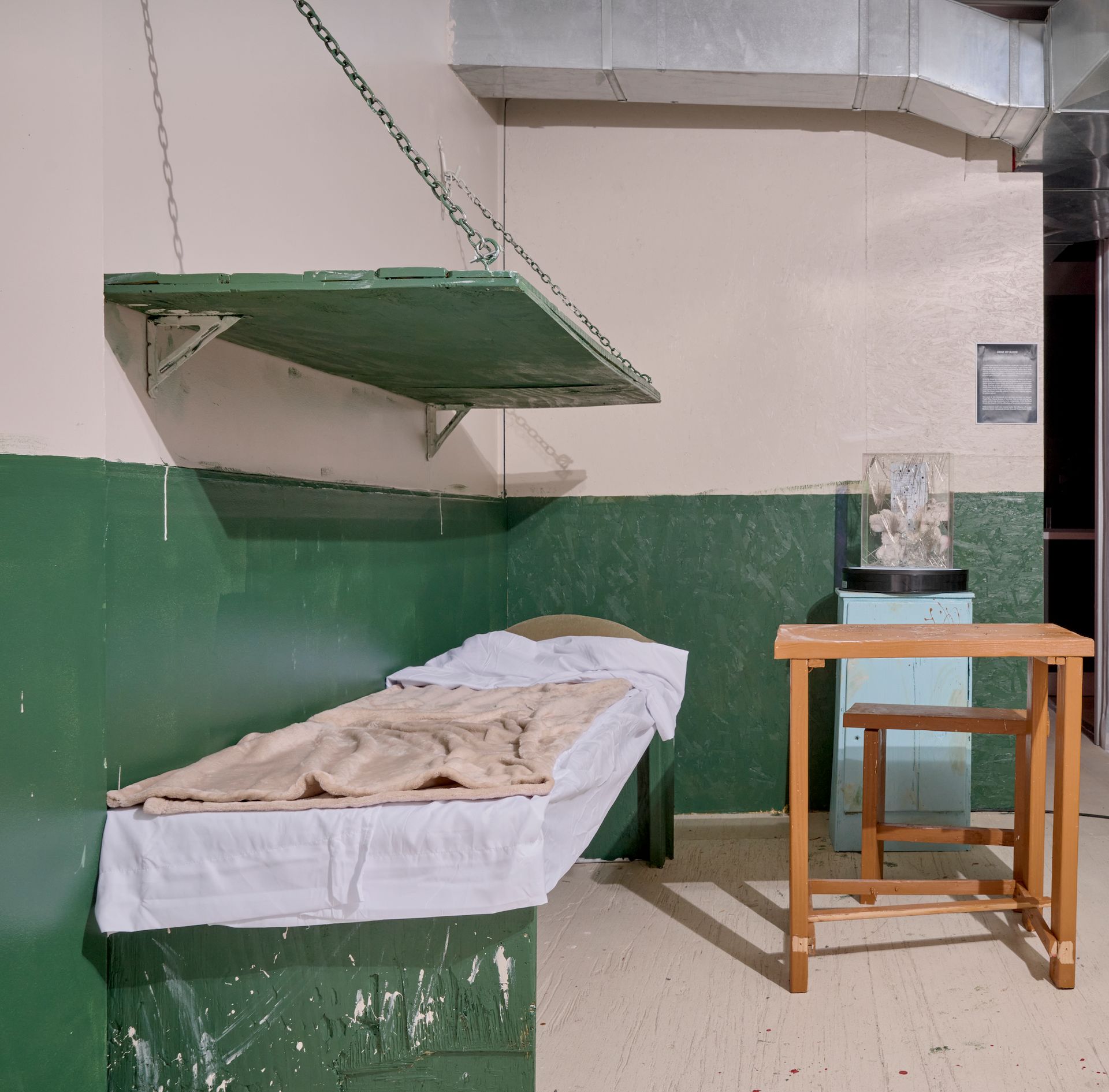
Installation view of Pussy Riot/Nadya Tolokonnikova: Putin’s Ashes with a recreation of Tolokonnikova’s penal colony cell in Container, Santa Fe, New Mexico Photo by Molly O’Brien
“I always believe that art can be more powerful than tanks and bullets sometimes because bullets can only penetrate your body, art can penetrate your mind,” Tolokonnikova says. “So my art follows the phrase: this art is a weapon.”
- Pussy Riot/Nadya Tolokonnikova: Putin’s Ashesuntil July 20, Container, Santa Fe, New Mexico
